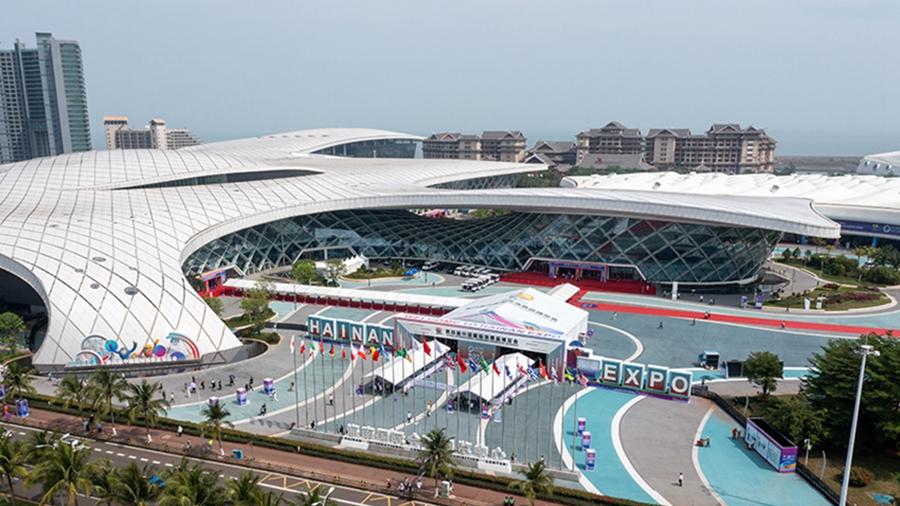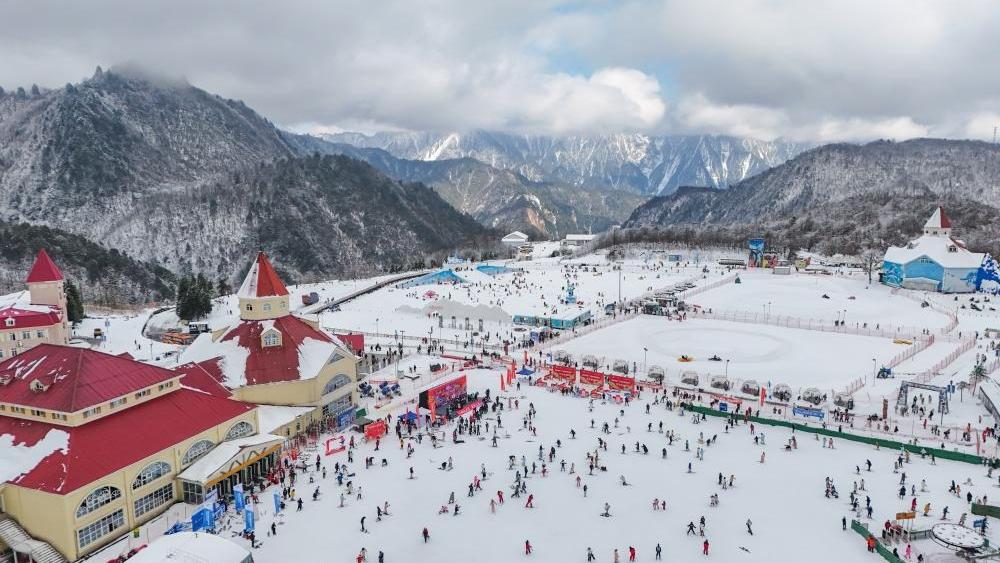Chinese Lunar New Year offers window on nation's economic vitality
The Spring Festival holds a cherished place in the hearts of the Chinese people, offering a vivid snapshot of China's economic vitality. In this festival, filled with festive joy, we experience not only the deep bonds of family and the preservation of age-old traditions but also a dynamic display of the Chinese economy. From the bustling surge of travel during the holiday period to shifting consumer habits, the Spring Festival offers a comprehensive look at the nation's evolving economy.
On the global stage, China's economic rise often puzzles Western observers, as conventional models fail to capture the unique dynamism of China's economic practices. Examining the "economics of the Spring Festival" offers valuable insights into the essence of China's economic development. This beloved holiday, rich in tradition and festivity, highlights the unique nature and immense potential of China's economy.
Home: The economic pulse within chunyun
For the Chinese people, home symbolizes warmth and remains central to the Spring Festival. China's annual Spring Festival travel rush, also known as chunyun, officially started on January 14 this year, with an estimated 9 billion trips expected over the 40-day festive period. This massive short-term migration, driven by the Chinese people's strong desire to reunite with their families during the holiday, ultimately plays a role in driving China's economic growth.
The travel rush reflects both the yearning for home and the progress of China's economic development. China has built the world's largest high-speed railway and expressway networks. Technologically, China's railway system leads globally in high-speed, plateau, cold-climate, and heavy-load rail technologies. This vast transportation network and the rapid progress in transportation technology enhance travel experiences and drive economic growth.
The evolution of the Spring Festival travel rush mirrors China's broader socio-economic progress, contributing to steady GDP growth. China's fixed-asset investment in transportation is expected to reach approximately 3.8 trillion yuan ($521 billion) by the end of 2024, according to the Ministry of Transport's annual conference held in December. With continued investment, each infrastructure upgrade bolsters the foundation of China's growing economy. Amid festive reunions, China's economic transformation continues to unfold.
Gifts: The economic trends in consumption
The Spring Festival is a time for exchanging blessings and gifts. From the bygone era of scarcity, when tobacco, liquor, sugar, and tea were popular presents, to the recent trend of digital red envelopes on WeChat, and now the "send gifts" feature on some e-commerce platforms, these trends highlight China's economic growth and evolving consumer habits.
In recent years, younger generations - especially those born in the 90s and even the 00s - have become key drivers of New Year purchases. As the Spring Festival approaches, a trending topic on Chinese social media highlights young professionals, who return to their rural hometowns for the holiday, yet can't seem to shake their coffee-drinking habits. These discussions appear to influence younger consumers' New Year shopping choices. The wide range of items they choose - from deeply personal, emotionally meaningful gifts to more unconventional pairings like "frozen pear plus coffee" - reflects growing emotional and personalized consumption trends.
As concepts like "Chinese style," "guochao," and "neo-Chinese style" gain popularity across consumer markets; as Thai rice, Chilean cherries, and New Zealand kiwifruits make their way to Chinese dinner tables; as VR technology, drones, and robot vacuum cleaners find their place in shopping carts - these trends drive market diversification and economic upgrading.
Celebration: The economic potential beyond the data
The Spring Festival is a time for joyous celebration. Lantern displays, dragon dances, and bustling New Year fairs characterize the celebrations. From an offline perspective, data from China's Ministry of Commerce reveals that on the eve of last year's Spring Festival, foot traffic in major pedestrian streets rose 26.9 percent, with sales increasing 21.7 percent year-on-year. From an online viewpoint, in the two weeks leading up to last year's Spring Festival Eve, sales of alcoholic beverages in Alipay's live streams reportedly doubled, which, to some extent, reflects the increase in gatherings and celebrations.
These festive activities do more than simply contribute to GDP growth; they signify broader economic potential. Beyond the numbers, the vibrancy and celebrations of the Spring Festival highlight the Chinese people's optimism and forward-looking aspirations. This positive, forward-looking spirit serves as the unyielding force driving the continuous and healthy development of China's economy.
Travel: The economic vitality in leisure activities
The Spring Festival is a time for reunions and a peak travel season. In 2025, with the government officially adding the eve of Spring Festival to the public holiday calendar and the successful inclusion of the Spring Festival on UNESCO's list of intangible cultural heritage, travel enthusiasm is expected to rise further. Several domestic travel agencies have released their findings, indicating a positive trend in inbound and outbound travel. According to Trip.com, during the Spring Festival holidays in 2025, bookings by foreign tourists visiting China are projected to rise by 203 percent year-on-year.
During the Spring Festival, the flourishing of both outbound and inbound tourism reflects a thriving tourism market and fosters cultural exchanges between China and the world. This interaction benefits China's economy and energizes the global market, highlighting the profound integration and mutual benefits between China's economy and the wider world.
Novelty: The economic transformation in change
The Spring Festival ushers in the Lunar New Year, symbolizing renewal and hope. As new technologies become ever more integrated into daily life, new dimensions emerge, including "online gatherings" and "virtual tourism." Technology brings a fresh sense of wonder to the Spring Festival. Beijing's "AI-themed" technology Spring Festival temple fair, scheduled to run from January 30 to February 3, 2025, will highlight technological innovation. Over 50 technology companies will present more than 70 AI applications, according to CNR, infusing the celebrations with a high-tech flair.
The Chinese economy surrounding the Spring Festival continues to evolve. As the economy undergoes significant transformation, the "economics behind the Spring Festival" serves as a vivid reflection of this change, reflecting both economic progress and development potential.
The author is a reporter with the Global Times.
Photos
 Global artists showcase Chinese heritage-inspired art in Beijing amid Spring Festival atmosphere
Global artists showcase Chinese heritage-inspired art in Beijing amid Spring Festival atmosphere People across China enjoy traditional customs before Spring Festival
People across China enjoy traditional customs before Spring Festival A glimpse of China's development through exhibitions
A glimpse of China's development through exhibitions China's Sichuan attracts tourists, snow sports enthusiasts with rich ice and snow resources
China's Sichuan attracts tourists, snow sports enthusiasts with rich ice and snow resources
Related Stories
- UN chief extends Chinese New Year wishes
- Customers select Spring Festival decorations ahead of Spring Festival across China
- Chinese premier visits old revolutionary base ahead of Spring Festival
- Chinese New Year paintings on display in Nepal
- Feature: From calligraphy to cuisine, Chinese cultural elements showcased in Spring Festival celebration in Myanmar
Copyright © 2025 People's Daily Online. All Rights Reserved.





